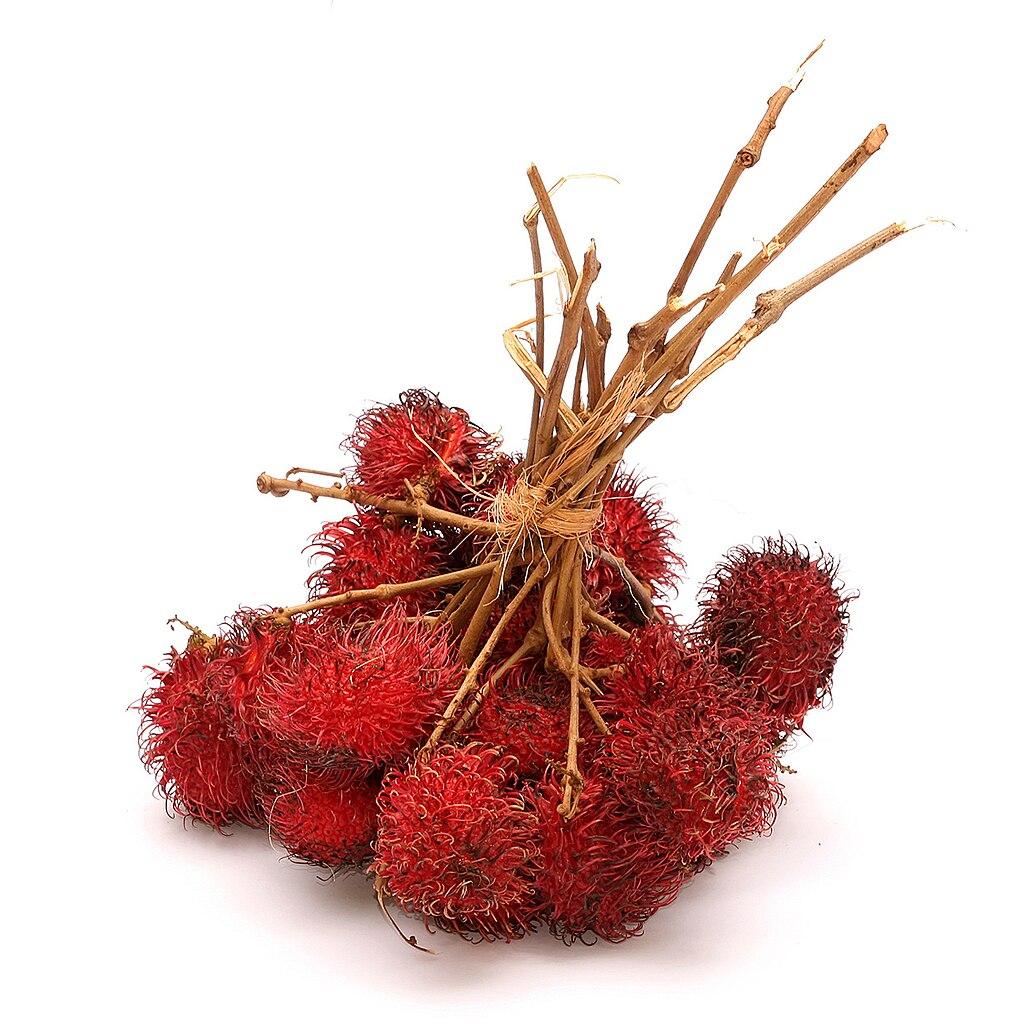The rambutan is a tropical fruit native to Southeast Asia, closely related to the lychee and longan. It is widely grown in countries like Indonesia, Malaysia, Thailand, and the Philippines. Here’s what you should know about it:
Description:
- Appearance: The rambutan is small and round, about the size of a golf ball. Its skin is bright red or yellow when ripe and is covered with soft, hair-like spines, giving it a unique, fuzzy appearance.
- Flesh: Inside, the fruit contains translucent, juicy, sweet flesh with a taste similar to lychee but slightly more tart.
- Seed: At the center, there's a single, inedible seed.
Nutritional Benefits:
- Rich in vitamin C, which supports the immune system.
- Contains fiber for digestive health.
- Offers iron to help with oxygen transport in the blood.
- Includes antioxidants that may combat free radicals.
Culinary Uses:
- Typically eaten fresh as a snack.
- Can be used in desserts, salads, smoothies, or jams.
- Sometimes paired with savory dishes in Southeast Asian cuisine.
Growing Conditions:
- Prefers tropical climates with high humidity and regular rainfall.
- Thrives in well-drained soil and requires plenty of sunlight.

